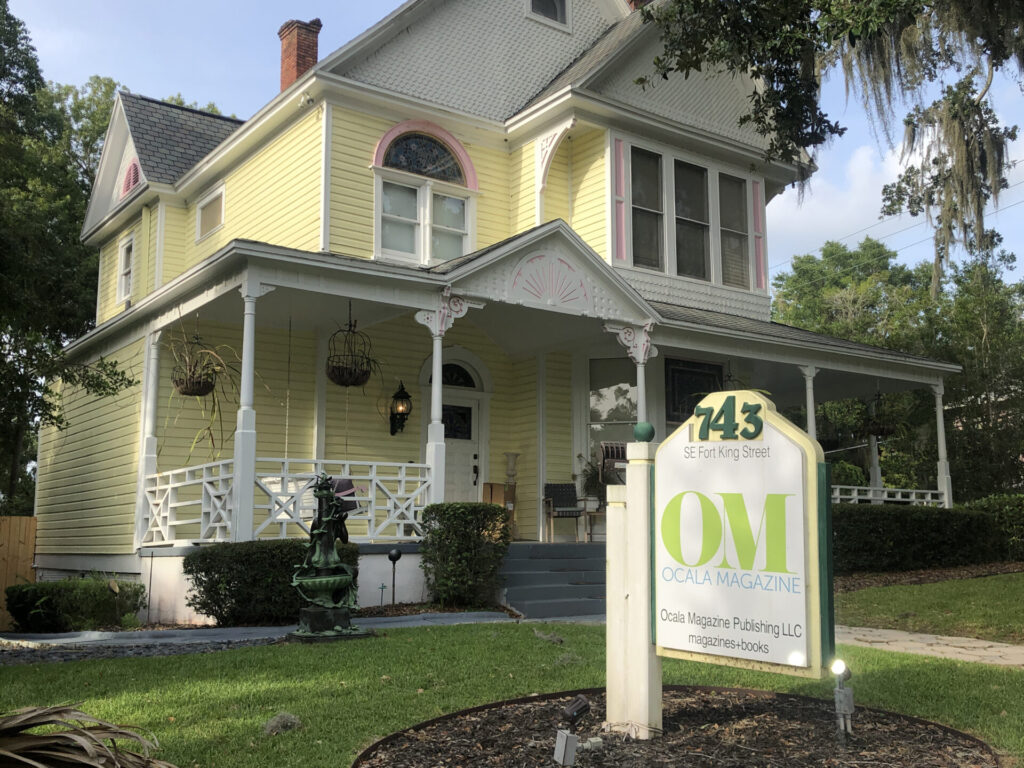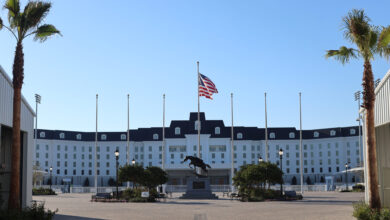Strolling along Fort King Street among the historic homes and offices, one most certainly passes by “Honey Bee,” the purple and gold Horse Fever statue painted by artist Christian Stanley. Honey Bee stands guard in front of a significant historical treasure for Ocala, and one that also houses the current offices for Ocala Magazine, the Z.C. Chambliss House.
Built in 1891, the home is one in a long list of Victorian Frame Vernacular Style homes in the area. The historical marker out front states that the “… house exhibits Gothic architectural influences. Extensive intricate woodwork along with French stained glass and tile influences is featured throughout the interior.”
The house is especially remarkable for its yellow exterior with pastel colors for its trim. The house is seen as a prime example of the continuation of the Queen Anne Revival influence in its “asymmetrical massing, decorative wood and glass work,” according to The Historical Marker Data Base.
As for the house’s namesake, Z.C. Chambliss was among the early leaders of Ocala as one who helped shepherd the local banking industry through a rough period. Along with T.T. Munroe, Chambliss founded the Munroe and Chambliss Bank in 1897, the only local bank from that period that has survived to the present day albeit under different names and ownerships.
After the collapse of the citrus industry following the freeze of 1895, it was Chambliss’ bank that helped resurrect banking in Ocala. But banking was not the only strong suit of Chambliss. Rivaling his exploits as a banker was Chambliss’ role in agriculture, specifically in breeding pure-blooded livestock.
With Munroe, Chambliss created what is believed to be Marion County’s first stock farm southwest of Ocala in the late 1890s. It was at that location in 1902 where the state’s first auction of blooded hogs was held. At that auction, the emphasis was on pure-blood hogs with such breeds as Hampshire, Duroc and Berkshire.
The livestock activity fueled by Chambliss led to competitions and the creation of the Marion County Fair in 1908, which housed exhibition buildings for livestock and farm products as well as a racetrack for horses. This led to the creation of a fairgrounds on West Broadway, or what is now Silver Springs Boulevard, at the current location of the Martin Luther King Recreation Complex. The fair closed in the 1920s, but in the late 1930s was revived at a new location as the Southeastern Fat Stock Show and Sale, then finally as the Southeastern Youth Fair.
Chambliss’ contributions did not stop with banking or livestock, or even the creation of a Marion County fair – he was also a man of the water and helped found one of the area’s longest-running clubs. In 1909, Chambliss was among the first officers of the Lake Weir Yacht Club, which exists to this day. He served as treasurer of the club, whose stated objective was “to unite owners of launches on Lake Weir in closer affiliation; to hold launch parades, water carnivals, races, picnics and other functions, and to promote and protect fishing in Lake Weir.”







